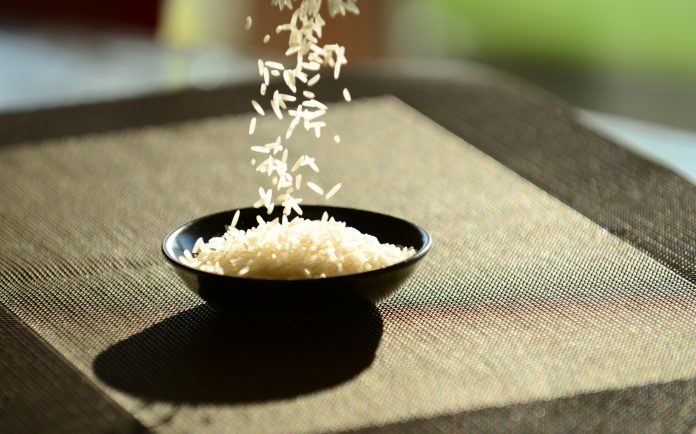Asiha Grigsby, Director, International Promotion Western Hemisphere at USA Rice, enlightens us on rice, which can be described as a tiny grain, yet a global phenomenon
Over the past several decades, trade in agricultural products has grown as global agricultural production has increased and consumers’ palates become more diversified. Rice is the second largest cultivated cereal in the world and one of the products that has seen increases in not just production, growing 87% in the past three decades, but also in trade which has grown 270% over the same time period.
Rice is a small but mighty grain that is grown on every continent, except Antarctica, and included in numerous cuisines. It is recognised as an essential element in the basic food basket for more than half of the world’s population; nearly 3 billion people consume rice regularly. However, only a small portion of rice is traded. Official United States Department of Agriculture (USDA) estimates calculate that approximately 90% of the rice grown in the world is consumed in the country in which it grew. Although Asia accounts for the lion’s share of world rice production (85%), the United States is the largest exporter outside of Asia.
All types of rice are grown in the U.S., from short sticky rice for sushi to creamy medium grain for risotto and tasty long grain. Rice has been grown in the U.S. for nearly four centuries and our farmers take great pride in sustainable cultivation practices which allow them to ensure a safe food supply, protect the environment and pass the land on to their children. With techniques such as land use efficiency to produce more rice with less acres and soil conservation, which protects the land from erosion and loss of nutrients, U.S. rice farmers maintain a standard of excellence in environmental stewardship.
Just recently, our rice farmers committed to ambitious sustainability goals by 2030, including a 13% reduction in greenhouse gas emissions, a 13% decrease in water use and a 10% increase in biodiversity, among other metrics. U.S. rice farmers must comply with, and often exceed, federal and state laws that regulate food and labour safety standards.
Mexico: U.S. rice’s largest export market
Although American rice farmers employ the highest industry standards to produce more grain with fewer acres of land, U.S. rice fields could be reconfigured into a strip three kilometres wide stretching from Land’s End to John O’Groats three times! Due to the industry’s successful production and sustainability practices, half of the rice grown in the U.S. is exported. Mexico is the largest export destination for U.S. origin rice and accounts for about 10% of all rice acres grown in the U.S., translating into about 800,000 MT annually.
The U.S. and Mexico share a 3,100- kilometre-long border which is typically the busiest and most frequently crossed international border in the world. Helping to strengthen this close relationship, the United States, Mexico, Canada Free Trade Agreement (USMCA, formerly NAFTA) was created which allows U.S. origin rice to enter duty-free while most other countries pay a 20% tariff for milled rice or 9% tariff for un-milled rice.
Mexicans don’t eat a lot of rice – their annual per capita consumption (7.8 kgs) is less than that of the UK (10.3 kgs). However, due to the sheer size of the country, they import a lot of rice. Long grain white rice is overwhelmingly the preferred variety by Mexicans; and over the past year, they’ve consumed even more.
Similar to what we’ve seen in countries throughout the world, people stockpiled items during the beginning of 2020 due to the pandemic and one of those items was rice. Once supply chains adapted to the increase in retail purchases and decrease in foodservice shipments, consumers had a lot of rice on hand but still were largely unfamiliar with the range of recipes available. USA Rice kicked into gear with our marketing programme in Mexico, helping to teach consumers about the health benefits of rice, and how to cook it with fun, new recipes. Many consumers have been surprised to learn that rice is a gluten-free, cholesterol-free and sodium-free food that is packed with essential vitamins like potassium, magnesium and folate.
Rice has long been considered an essential element in the basic food baskets of many countries worldwide. The onset of the COVID-19 pandemic exponentially increased the need for rice as an economical solution to feed the masses at a time of universal uncertainty. As a result, rice purchases saw a global uptick. Mexico, in particular, announced unilateral tariff rate quotas (TRQs) to allow 105,000 MT of rice from any origin to enter the country duty-free until December 31, 2021.
Countries like Mexico and the UK, turn to the U.S. to satisfy their demand for quality rice as an increasingly popular element in their diverse local and ethnic cuisine. Consumers everywhere benefit from knowing that U.S. origin rice is among the most sustainable and safe in the world. From the fields of the U.S rice farmer to tables around the globe, this tiny grain is nothing less than a global phenomenon.
Mexico: Did you know?
• Mexico is one of only a few countries with more coastline than land borders.
• Mexico has a population of 126 million and is among the world’s 15 largest economies: the second-largest economy in Latin America.
• The meteorite that was responsible for the extinction of dinosaurs landed in Mexico.
• Mexicans don’t eat a lot of rice – their annual per capita consumption (7.8 kgs) is less than that in the UK (10.3 kgs)!
For more information on U.S. origin rice in Mexico, visit usarice.com.mx or follow us on social media www.facebook.com/USARiceMexico











